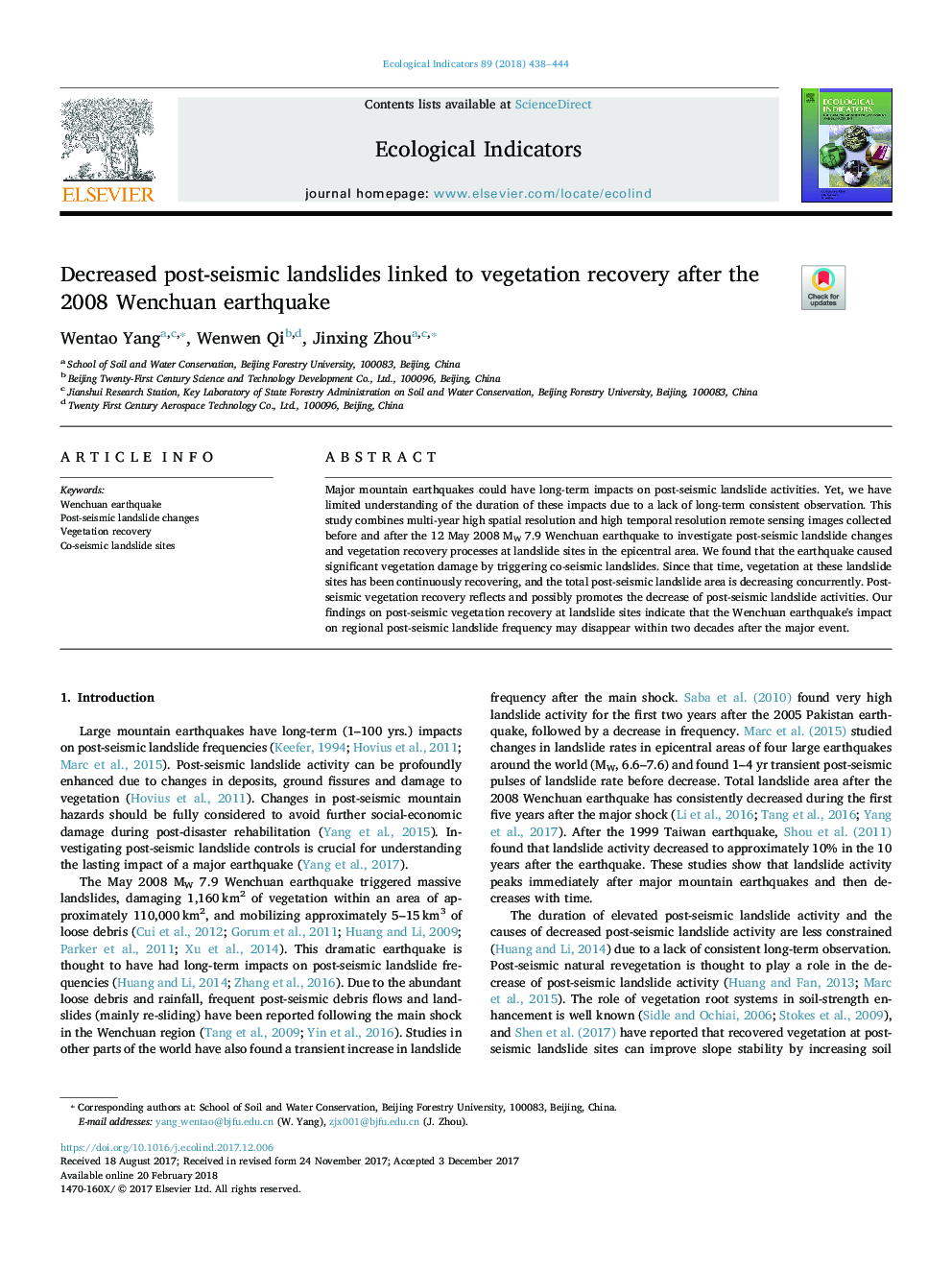| Article ID | Journal | Published Year | Pages | File Type |
|---|---|---|---|---|
| 8845486 | Ecological Indicators | 2018 | 7 Pages |
Abstract
Major mountain earthquakes could have long-term impacts on post-seismic landslide activities. Yet, we have limited understanding of the duration of these impacts due to a lack of long-term consistent observation. This study combines multi-year high spatial resolution and high temporal resolution remote sensing images collected before and after the 12 May 2008 MW 7.9 Wenchuan earthquake to investigate post-seismic landslide changes and vegetation recovery processes at landslide sites in the epicentral area. We found that the earthquake caused significant vegetation damage by triggering co-seismic landslides. Since that time, vegetation at these landslide sites has been continuously recovering, and the total post-seismic landslide area is decreasing concurrently. Post-seismic vegetation recovery reflects and possibly promotes the decrease of post-seismic landslide activities. Our findings on post-seismic vegetation recovery at landslide sites indicate that the Wenchuan earthquake's impact on regional post-seismic landslide frequency may disappear within two decades after the major event.
Related Topics
Life Sciences
Agricultural and Biological Sciences
Ecology, Evolution, Behavior and Systematics
Authors
Wentao Yang, Wenwen Qi, Jinxing Zhou,
